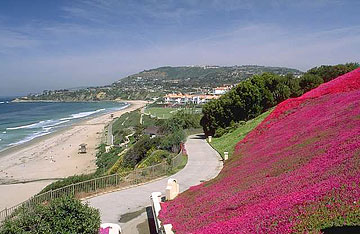- Home
- Learn about salinity
- Get to know your site
- Design a landscape
- Solve a problem
- Other information
Salinity Management Guide

In the field, you've observed your landscape's topography and the conditions of soils and plants. You've begun to figure out what needs further investigation. Perhaps you've also estimated the infiltration and drainage-related characteristics of your site's soil and collected samples of water, soil, and plants to submit to analytical laboratories.
Now, with notes from the field and various laboratory reports in hand, it's time to begin reviewing all of the results. Your goal becomes this: to answer the question "Does my landscape have a problem with salinity, or is it likely to develop one?"
It's vital to get a definitive answer to this question, particularly if your landscape is irrigated with water of elevated salinity or if you're considering the use of such water. As residues of salts in irrigation water accumulate over time in a landscape's soil, the following problems may arise unless compensatory management practices are implemented:
- Increasing amounts of total soluble salts in the soil may make it progressively more difficult for plants to draw adequate water.
- Ever-higher amounts of sodium in the soil may decrease the soil's permeability, making it harder for water to carry salts downward beyond the reach of plants' roots.
- The concentrations of sodium, chloride, and boron in the soil may increase over time, perhaps eventually reaching levels that are injurious to the landscape's more sensitive plants.
| « Previous module | Next page » |